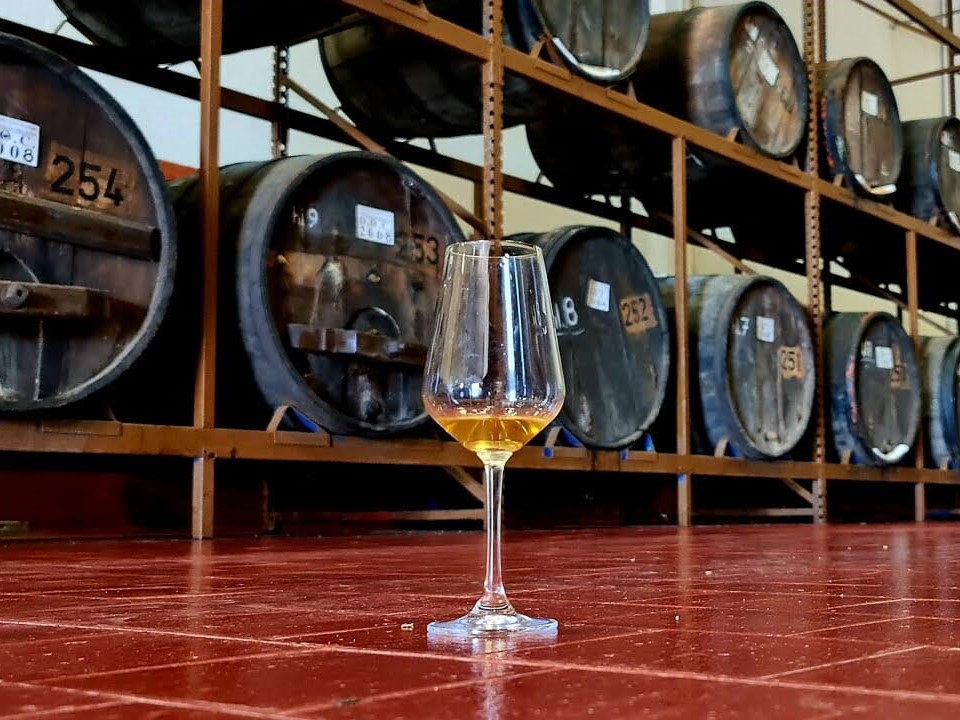
 We the Italians Editorial Staff
We the Italians Editorial Staff
Italian wine: La Vernaccia di Oristano, a Sardinian wine between legends and traditions
- WTI Magazine #185 Mar 22, 2025
-

 We the Italians Editorial Staff
We the Italians Editorial Staff
The Italian wine industry often highlights its historical roots, tracing its origins to ancient times, often referencing figures like the Greeks and Romans. However, this connection to the past doesn't always hold up under scrutiny, as modern wine production is shaped by much more recent advancements in both knowledge and technology.
While the general rhetoric around wine can sometimes feel more like a marketing tool, there are notable exceptions, such as the case of Vernaccia di Oristano. When discussing this wine, tradition is not just a rhetorical point but a necessary and genuine aspect of its story.
The Origins and History of Vernaccia di Oristano
Vernaccia di Oristano is a wine that truly embodies its historical roots. It is Sardinia's first DOC wine, officially recognized in 1971, and is made from the Vernaccia grape, a white variety. The name "Vernaccia" likely comes from the Latin vernaculus, meaning native or local, and the Romans are believed to have named it after encountering this indigenous grape in Sardinia. This is part of a broader tradition of various Vernaccia wines across Italy, though each of these varieties is distinct. Interestingly, while the Romans associated the grape with Sardinia, evidence shows that the cultivation of this grape dates back much further, to the Nuragic period, around 3000 BC. This predates the Phoenician colonization by at least two centuries. Historical references to the grape can be found as far back as 1327, in a legal document known as the Breve di Villa di Chiesa.
The Production of Vernaccia di Oristano
The production zone of Vernaccia di Oristano lies in the lower Tirso Valley, comprising four subregions: San Vero Milis, Solarussa, Simaxis, and Oristano. The geography of these areas includes bennaxi—alluvial, fertile soils close to the river—and gregori, which are older, less fertile soils with a mix of pebbles and clay. The proximity to the sea creates a Mediterranean climate, ideal for growing Vernaccia, with consistent winds and mild temperatures.
What truly sets Vernaccia di Oristano apart from other wines is its unique aging process. After a traditional white wine fermentation, the wine is transferred into chestnut or oak barrels, which are only filled to 75-80% of their capacity. This creates a significant amount of air in the barrels, which would typically cause oxidation in other wines, leading to loss of quality. However, in the case of Vernaccia di Oristano, the goal is to deliberately oxidize the wine. This method encourages the development of unique aromatic compounds, primarily aldehydes, which contribute to its distinct character.
Flor: A Key Element
A fascinating aspect of Vernaccia di Oristano is the development of flor, a layer of yeast (Saccharomyces cerevisiae) that forms on the surface of the wine in the barrel. This yeast limits the wine's exposure to oxygen while metabolizing the alcohol into acetaldehyde, adding to the complexity of the wine’s flavor. To form, the wine must have an alcohol content between 14.5% and 16%, and the barrels need to be kept in well-ventilated cellars to encourage evaporation. The wine typically ages in the barrels for at least two years, with “Riserva” wines requiring a minimum of four years.
The process of creating flor and the resulting oxidation method dates back to pre-Roman times. In fact, historical evidence points to the presence of amphorae used for storing wine, likely encouraging the development of the flor even then. The Romans, who generally added honey, spices, and seawater to their wine, were surprised to find that the Vernaccia wine in Sardinia was already drinkable without any need for such additives. The Romans called it vinum mirratum, comparing it to myrrh to emphasize its value.
The Wine’s Characteristics
Vernaccia di Oristano is an amber-colored wine with a distinctive, intense flavor. It is full-bodied and harmonious, with prominent notes of honey, almond, and helichrysum. Older versions, especially those aged for longer periods, can also feature flavors of licorice. One particularly notable release is the 1979 Vernaccia di Oristano Doc "Antico Gregori", which was only released recently, marking a 45-year aging period.
Though oxidative wines like Vernaccia di Oristano have fallen out of favor in recent decades, the grape’s legacy endures. The number of hectares dedicated to Vernaccia in the Tirso Valley has declined significantly since the 1970s, but the trend is starting to reverse, with production slowly increasing. Despite this, Vernaccia remains deeply rooted in Sardinian culture and continues to be consumed regularly on the island.
The wines most commonly consumed in Sardinia are Vernaccias with short aging, typically 2-3 years, which are used to achieve su murruai. Long aging comes from a deeply rooted Sardinian tradition: when a daughter was born, a barrel of Vernaccia was set aside to rest until the daughter married (even today, many barrels are named after women). The wine from that barrel would then be offered on the day of the wedding.
Reviving Vernaccia di Oristano
The changing tastes of modern wine drinkers have not always favored oxidative wines, but the return to appreciating these wines is evident. In 2022, Davide Orro, Mauro Contini, and other producers established the Consorzio Vernaccia di Oristano DOC in an effort to promote the wine and its heritage. Their goal is to show that Vernaccia is not only a wine for contemplation but also a versatile table wine that can shine in various culinary contexts.
The story of Vernaccia di Oristano is a tale of tradition, craftsmanship, and a deep connection to Sardinia’s rich history. Through its unique production methods and historical significance, it stands as a testament to the island’s enduring viticultural heritage.